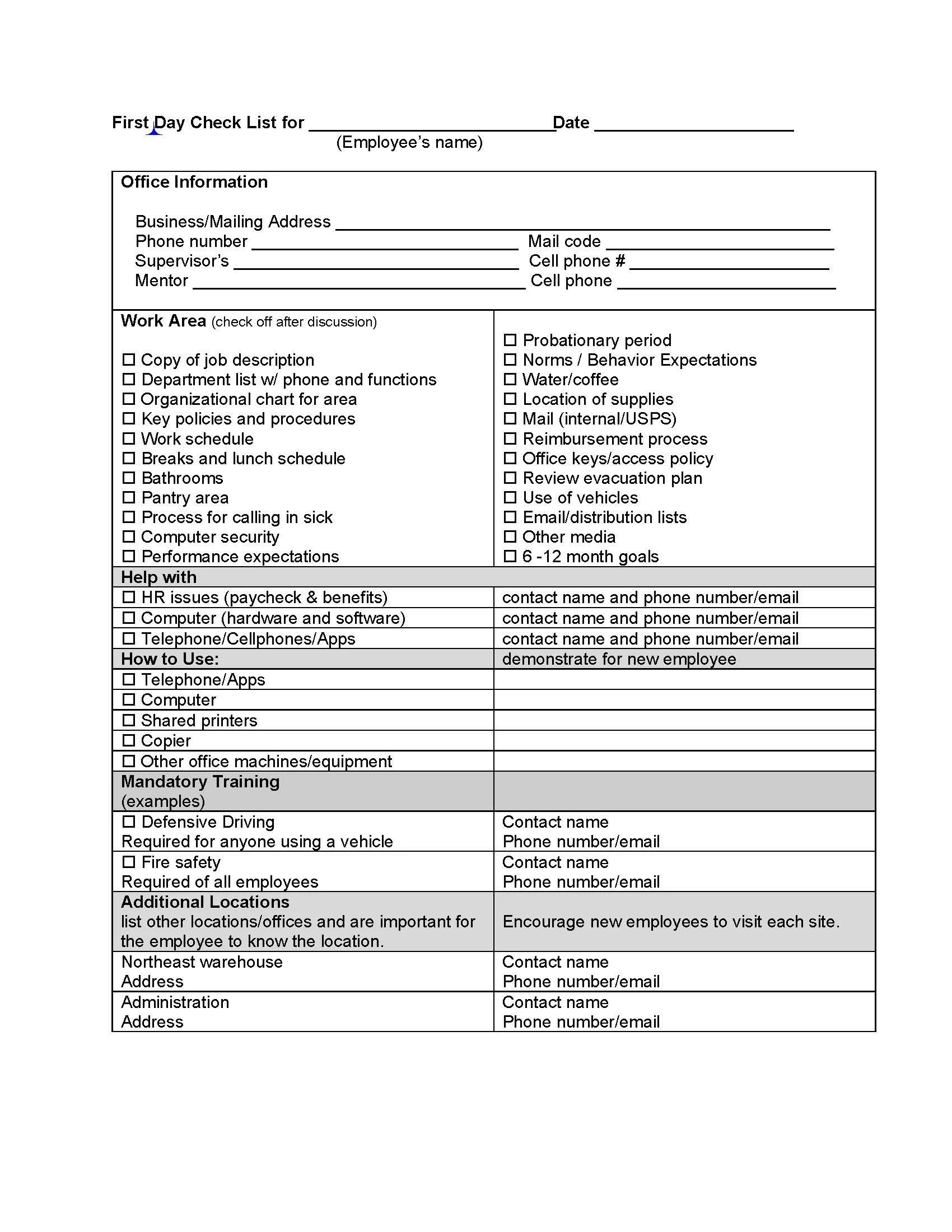Onboarding Strategies
A key take away from last month’s blog about creating a successful onboarding process is that the onboarding experience is unique to each department and is shaped by the distinct functions and character of the work unit. The blog outlined 7 essential principles that guide you in determining what should be included in your onboarding experience.
Transform your onboarding ideas into a practical and organized strategy by creating a checklist. The purpose of the checklist is to ensure all new employees have a similar experience and receive all the necessary information to become a valued member of the team.
Below, is an example of an onboarding checklist. This checklist focuses primarily on work functions. You can make it a more comprehensive checklist by adding elements that need to be completed before the new hire starts and those things that create a welcoming atmosphere.
Whether you use a simple checklist or a detailed procedure the point is to ensure that all key information is provided to help the new hire learn and understand their job, integrate with their fellow team members and understand the organization and its mission. To further strengthen onboarding, the leader and team members can regularly check in with the new hire.
The goal of a check-in is to obtain meaningful feedback from your new hire. Effective “check in” questions strike a balance between uncovering how they are feeling without making them feel “stupid” or being seen as a complainer. New hires are trying to make a good impression! "How is it going?" will most likely give you limited, if any, useful information.
Questions that can elicit helpful information are:
Is there anything that surprised you about the job now that you have been doing it for a while?
What has given you the most satisfaction thus far?
Is there anything you would like to know more about?
Who has been helpful? (in the work unit as well as outside the work unit). Note: those omitted might tell you something.
What are 2 or 3 things you find unclear about the job or the organization?
Have you encountered any unexpected situations?
If the nature of the work makes it difficult to check in regularly assign the new hire a “mentor” for a few months, a co-worker willing to answer questions or inform the new employee.
Recognize it takes time to successfully integrate someone into your team. Being attentive to the new hire as they navigate their job over the next few months will reduce missteps and promote performance excellence.
You have one chance to make a good first impression with your new hire.
A welcoming and well planned first few months will leave a lasting impression.
